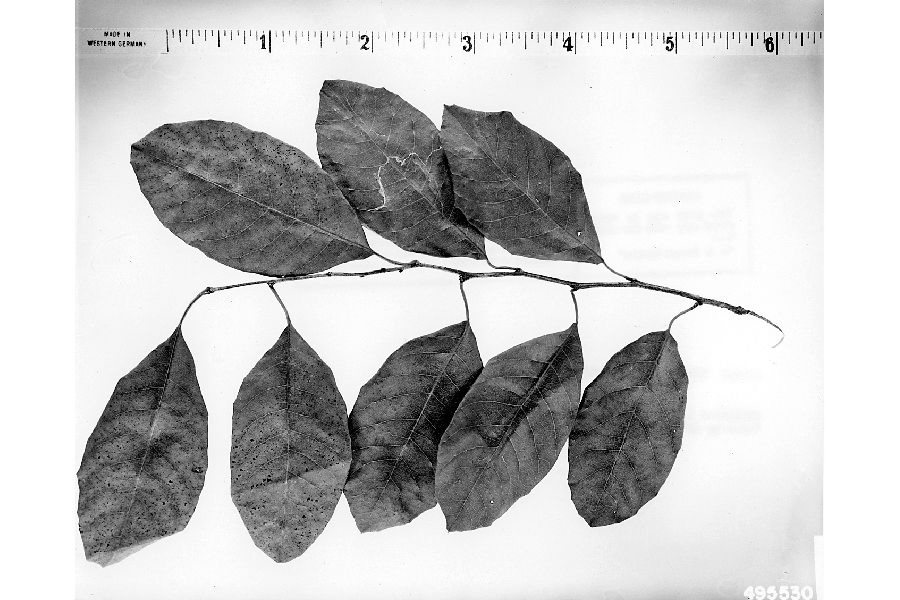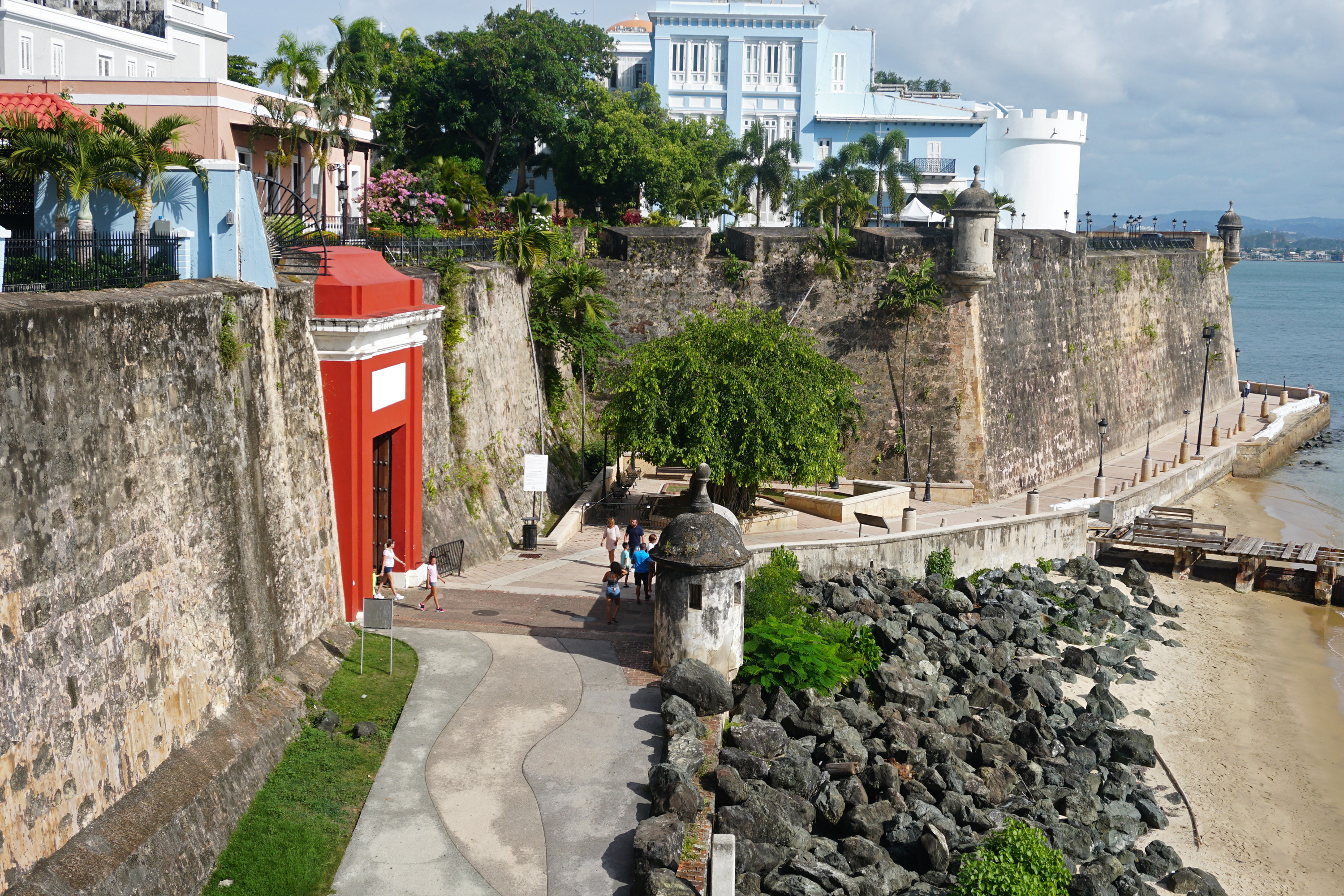|
Chrysophyllum Oliviforme
''Chrysophyllum oliviforme'', commonly known as the satinleaf, is a medium-sized tree native to Florida, the Bahamas, the Greater Antilles, and Belize. It is also known as damson plum, wild star-apple and saffron-tree. It gets the name "satinleaf" from the distinctive colors of the leaves. The top of the leaf is dark green while the bottom is light brown or copper. This distinctive look makes it a very aesthetically pleasing tree that is commonly used as an ornamental in yards and public spaces. Taxonomy The satinleaf was one of the many species described by Linnaeus, appearing for the first time in the tenth edition of his ''Systema Naturae'' in 1759. A combined DNA and morphological study of the subfamily Chrysophylloideae found the two main genera, ''Chrysophyllum'' and ''Pouteria'', to be highly polyphyletic, and that ''C. oliviforme'' is in a clade with other members of the genus. It is most closely related to ''Chrysophyllum cainito, C. cainito''. Description Ind ... [...More Info...] [...Related Items...] OR: [Wikipedia] [Google] [Baidu] |
Carl Linnaeus
Carl Linnaeus (23 May 1707 – 10 January 1778), also known after ennoblement in 1761 as Carl von Linné,#Blunt, Blunt (2004), p. 171. was a Swedish biologist and physician who formalised binomial nomenclature, the modern system of naming organisms. He is known as the "father of modern Taxonomy (biology), taxonomy". Many of his writings were in Latin; his name is rendered in Latin as and, after his 1761 ennoblement, as . Linnaeus was the son of a curate and was born in Råshult, in the countryside of Småland, southern Sweden. He received most of his higher education at Uppsala University and began giving lectures in botany there in 1730. He lived abroad between 1735 and 1738, where he studied and also published the first edition of his ' in the Netherlands. He then returned to Sweden where he became professor of medicine and botany at Uppsala. In the 1740s, he was sent on several journeys through Sweden to find and classify plants and animals. In the 1750s and 1760s, he co ... [...More Info...] [...Related Items...] OR: [Wikipedia] [Google] [Baidu] |
Invasive Species
An invasive species is an introduced species that harms its new environment. Invasive species adversely affect habitats and bioregions, causing ecological, environmental, and/or economic damage. The term can also be used for native species that become harmful to their native environment after human alterations to its food web. Since the 20th century, invasive species have become serious economic, social, and environmental threats worldwide. Invasion of long-established ecosystems by organisms is a natural phenomenon, but human-facilitated introductions have greatly increased the rate, scale, and geographic range of invasion. For millennia, humans have served as both accidental and deliberate dispersal agents, beginning with their earliest migrations, accelerating in the Age of Discovery, and accelerating again with the spread of international trade. Notable invasive plant species include the kudzu vine, giant hogweed (''Heracleum mantegazzianum''), Japanese knotw ... [...More Info...] [...Related Items...] OR: [Wikipedia] [Google] [Baidu] |
Flora Of Mexico
Mexico, officially the United Mexican States, is a country in North America. It is the northernmost country in Latin America, and borders the United States to the north, and Guatemala and Belize to the southeast; while having maritime boundaries with the Pacific Ocean to the west, the Caribbean Sea to the southeast, and the Gulf of Mexico to the east. Mexico covers 1,972,550 km2 (761,610 sq mi), and is the thirteenth-largest country in the world by land area. With a population exceeding 130 million, Mexico is the tenth-most populous country in the world and is home to the largest number of native Spanish speakers. Mexico City is the capital and largest city, which ranks among the most populous metropolitan areas in the world. Human presence in Mexico dates back to at least 8,000 BC. Mesoamerica, considered a cradle of civilization, was home to numerous advanced societies, including the Olmecs, Maya, Zapotecs, Teotihuacan civilization, and Purépecha. Spanish c ... [...More Info...] [...Related Items...] OR: [Wikipedia] [Google] [Baidu] |
Flora Of Florida
Flora (: floras or florae) is all the plant life present in a particular region or time, generally the naturally occurring (indigenous (ecology), indigenous) native plant, native plants. The corresponding term for animals is ''fauna'', and for fungi, it is ''funga''. Sometimes bacteria and fungi are also referred to as flora as in the terms ''gut flora'' or ''skin flora'' for purposes of specificity. Etymology The word "flora" comes from the Latin name of Flora (mythology), Flora, the goddess of plants, flowers, and fertility in Roman mythology. The technical term "flora" is then derived from a metonymy of this goddess at the end of the sixteenth century. It was first used in poetry to denote the natural vegetation of an area, but soon also assumed the meaning of a work cataloguing such vegetation. Moreover, "Flora" was used to refer to the flowers of an artificial garden in the seventeenth century. The distinction between vegetation (the general appearance of a community) and ... [...More Info...] [...Related Items...] OR: [Wikipedia] [Google] [Baidu] |
Flora Of The Caribbean
Flora (: floras or florae) is all the plant life present in a particular region or time, generally the naturally occurring ( indigenous) native plants. The corresponding term for animals is ''fauna'', and for fungi, it is '' funga''. Sometimes bacteria and fungi are also referred to as flora as in the terms ''gut flora'' or ''skin flora'' for purposes of specificity. Etymology The word "flora" comes from the Latin name of Flora, the goddess of plants, flowers, and fertility in Roman mythology. The technical term "flora" is then derived from a metonymy of this goddess at the end of the sixteenth century. It was first used in poetry to denote the natural vegetation of an area, but soon also assumed the meaning of a work cataloguing such vegetation. Moreover, "Flora" was used to refer to the flowers of an artificial garden in the seventeenth century. The distinction between vegetation (the general appearance of a community) and flora (the taxonomic composition of a community) wa ... [...More Info...] [...Related Items...] OR: [Wikipedia] [Google] [Baidu] |
Chrysophyllum
''Chrysophyllum'' is a group of trees in the Sapotaceae described as a genus by Linnaeus in 1753. The genus is native to the tropical Americas, from Mexico to northern Argentina, including the Caribbean. One species, '' C. oliviforme'', extends north to southern Florida.''Chrysophyllum'' L. ''World Flora Online''. Accessed 3 December 2022. Description ''Chrysophyllum'' members are usually tropical s, often growing rapidly to 10–20 m or more in height. The are oval, 3–15 cm long, green above, densely golden pubescent below, from which the genus is named. ...[...More Info...] [...Related Items...] OR: [Wikipedia] [Google] [Baidu] |
Endangered Species
An endangered species is a species that is very likely to become extinct in the near future, either worldwide or in a particular political jurisdiction. Endangered species may be at risk due to factors such as habitat loss, poaching, invasive species, and climate change. The International Union for Conservation of Nature (IUCN) Red List lists the global conservation status of many species, and various other agencies assess the status of species within particular areas. Many nations have laws that protect conservation-reliant species which, for example, forbid hunting, restrict land development, or create protected areas. Some endangered species are the target of extensive conservation efforts such as captive breeding and habitat restoration. Human activity is a significant cause in causing some species to become endangered. Conservation status The conservation status of a species indicates the likelihood that it will become extinct. Multiple factors are ... [...More Info...] [...Related Items...] OR: [Wikipedia] [Google] [Baidu] |
Distribution Of Chrysophyllum Oliviforme In The USA
Distribution may refer to: Mathematics *Distribution (mathematics), generalized functions used to formulate solutions of partial differential equations *Probability distribution, the probability of a particular value or value range of a variable **Cumulative distribution function, in which the probability of being no greater than a particular value is a function of that value *Frequency distribution, a list of the values recorded in a sample * Inner distribution, and outer distribution, in coding theory *Distribution (differential geometry), a subset of the tangent bundle of a manifold *Distributed parameter system, systems that have an infinite-dimensional state-space *Distribution of terms, a situation in which all members of a category are accounted for *Distributivity, a property of binary operations that generalises the distributive law from elementary algebra *Distribution (number theory) *Distribution problems, a common type of problems in combinatorics where the goal i ... [...More Info...] [...Related Items...] OR: [Wikipedia] [Google] [Baidu] |
International Institute Of Tropical Forestry
The International Institute of Tropical Forestry () is a program of the United States Forest Service that was founded in 1939. It is headquartered in Rio Piedras, Puerto Rico, on the grounds of the University of Puerto Rico's Agricultural Experimental Station. May 20, 2014 marked the Institute's 75th anniversary. Background Dr. Ariel E. Lugo was the director after 1979. Dr. Lugo was succeeded in the position in 2022 by Dr. Grizelle Gonzalez Hurricane Irma and Maria Maria may refer to: People * Mary, mother of Jesus * Maria (given name), a popular given name in many languages Place names Extraterrestrial * 170 Maria, a Main belt S-type asteroid discovered in 1877 * Lunar maria (plural of ''mare''), large, ... severely disrupted the Institute's work. Its headquarters building was designed by architect W. Ellis Groben. Gallery International Institute of Tropical Forestry.JPG, The International Institute of Tropical Forestry c. 1960 See also * Frank H. Wadsworth Refe ... [...More Info...] [...Related Items...] OR: [Wikipedia] [Google] [Baidu] |
Chrysophyllum Oliviforme 02
''Chrysophyllum'' is a group of trees in the Sapotaceae described as a genus by Linnaeus in 1753. The genus is native to the tropical Americas, from Mexico to northern Argentina, including the Caribbean. One species, '' C. oliviforme'', extends north to southern Florida.''Chrysophyllum'' L. ''World Flora Online''. Accessed 3 December 2022. Description ''Chrysophyllum'' members are usually tropical s, often growing rapidly to 10–20 m or more in height. The are oval, 3–15 cm long, green above, densely golden pubescent below, from which the genus is named. ...[...More Info...] [...Related Items...] OR: [Wikipedia] [Google] [Baidu] |
Greater Antilles
The Greater Antilles is a grouping of the larger islands in the Caribbean Sea, including Cuba, Hispaniola, Puerto Rico, and Jamaica, together with Navassa Island and the Cayman Islands. Seven island states share the region of the Greater Antilles, with Haiti and the Dominican Republic sharing the island of Hispaniola. Together with the Lesser Antilles, they make up the Antilles, which along with the Lucayan Archipelago, form the West Indies in the Caribbean region of the Americas. While most of the Greater Antilles consists of independent countries, Puerto Rico and Navassa Island are Territories of the United States, unincorporated territories of the United States, while the Cayman Islands are a British Overseas Territories, British Overseas Territory. The largest island is Cuba, which extends to the western end of the island group. Puerto Rico lies on the eastern end, and the island of Hispaniola, the most populated island, is located in the middle. Jamaica lies to the south of ... [...More Info...] [...Related Items...] OR: [Wikipedia] [Google] [Baidu] |
Chrysophyllum Olivifome— Leaf Coated With Golden Pubescence From Underside Of Leaf Above
''Chrysophyllum'' is a group of trees in the Sapotaceae described as a genus by Linnaeus in 1753. The genus is native to the tropical Americas, from Mexico to northern Argentina, including the Caribbean. One species, '' C. oliviforme'', extends north to southern Florida.''Chrysophyllum'' L. ''World Flora Online''. Accessed 3 December 2022. Description ''Chrysophyllum'' members are usually tropical s, often growing rapidly to 10–20 m or more in height. The are oval, 3–15 cm long, green above, densely golden pubescent below, from which the genus is named. ...[...More Info...] [...Related Items...] OR: [Wikipedia] [Google] [Baidu] |





